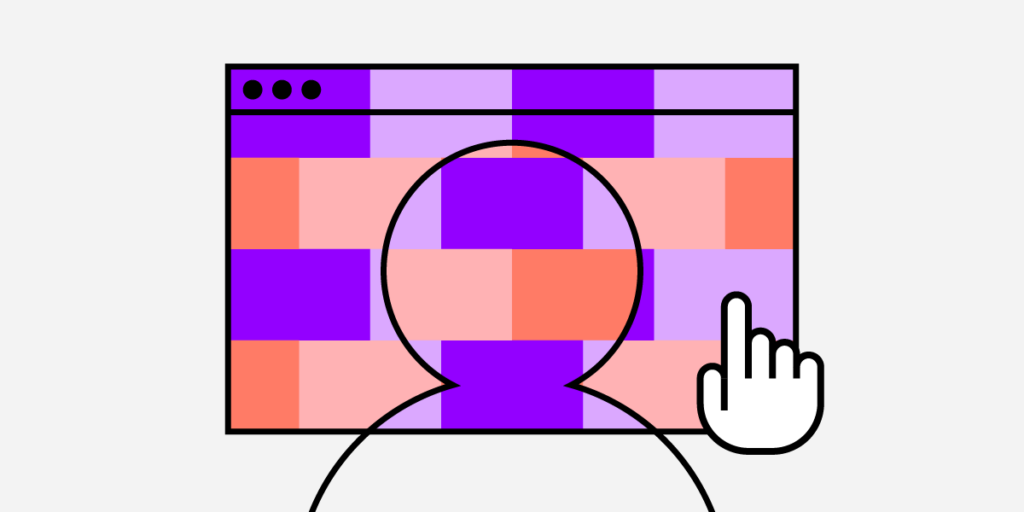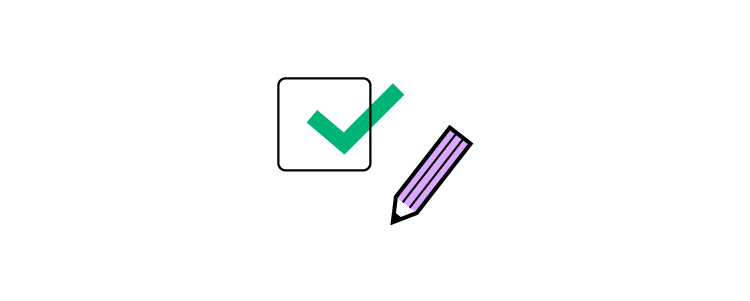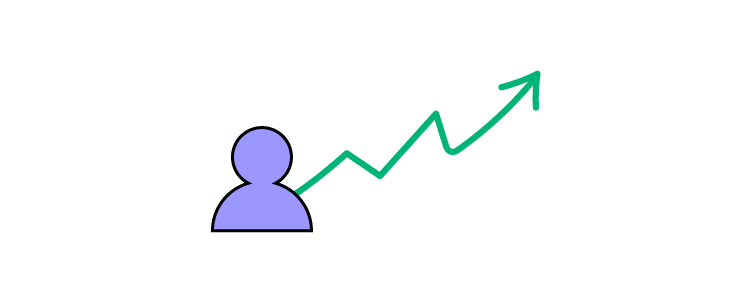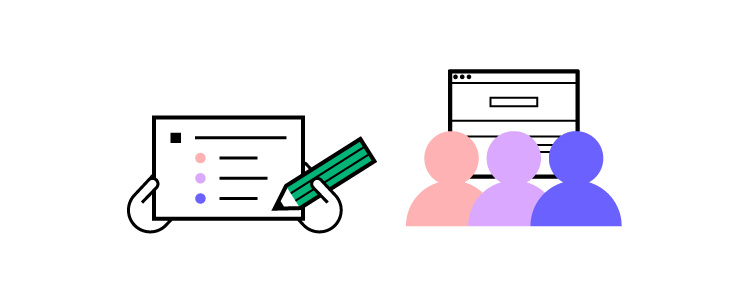How to Become a Product Designer

Are you navigating the journey to becoming a product designer? This guide reveals the product design essentials you’ll need to master, from skills and qualifications to networking and career progression. Discover how to align business goals with user needs, craft compelling products, and grow in the ever-evolving product design landscape.
Key takeaways:
- Mastering a mix of hard and soft skills, from wireframing to effective communication, is crucial for a successful career in product design.
- Formal education in design or computer science can provide a strong foundation, but alternative paths like online courses and self-study are also viable.
- Networking through industry events and communities and finding a mentor can fast-track your professional growth.
- Career progression in product design often moves from junior roles to specialized or managerial positions, with each stage demanding different levels of expertise.
- A well-crafted resume and interactive portfolio can make you stand out in job applications, so focus on tailoring your experience and showcasing quantifiable achievements.
Stand out from the crowd with interactive prototypes using the world’s most advanced product design tool. Sign up for a free trial to explore UXPin’s features and further your design skillset.
What do Product Designers do?
A product designer strategizes, conceptualizes, and delivers solutions that solve user problems. They align business goals with user needs, navigating the product lifecycle from market research to final execution.
Product designers map user flows, create wireframes and craft high-fidelity prototypes. Beyond visuals, they often work with cross-functional teams, including developers, UX designers, and product managers, to bring a product from idea to market.
Is product design the same as a UX designer?
Unlike UX designers, who focus mainly on the usability and functionality of a product, product designers own the entire design process. This ownership goes beyond user experience to include user interface design and often front-end development.
Where UX designers focus on the user experience, product designers look broader on the entire customer experience. They must understand how customers enter and exit the customer lifecycle to optimize usability and profitability.
What is the role of a Product Designer?
These core responsibilities reflect the full-spectrum ownership that a product designer has over the design process:
- Market Research: Identifies user needs and market gaps to inform design strategy.
- Wireframing: Creates basic layout structures to guide the project’s visual and content elements.
- Prototyping: Develops high-fidelity prototypes to visualize the end product and conduct usability tests.
- User Testing: Executes user interviews, usability tests, and surveys to gather insights for design iteration.
- Design Handoff: Coordinates with developers, supplying all visual assets and design specifications for coding.
- Quality Assurance: Reviews implemented designs in the development environment to ensure they meet design specifications.
- Cross-Functional Collaboration: Works with product managers, UX designers, and developers to align goals and deliver a unified user experience.
- Documentation: Creates and updates design specifications and libraries, ensuring team members implement designs consistently.
- Performance Metrics: Monitors KPIs like user engagement and conversion rates to measure the design’s impact.
What Skills Do You Need to Be a Product Designer?
Hard Skills
- Sketching & Wireframing: Mastery of sketching techniques to visualize design ideas rapidly.
- Prototyping Tools: Proficiency in design tools (UXPin, Figma, Adobe XD, Sketch, etc.) for high-fidelity prototyping.
- Coding: Basic knowledge of HTML, CSS, and JavaScript helps create interactive prototypes and enhances communication with developers.
- Design Systems: Understand how to build and maintain a scalable design system.
- User Research: Able to conduct user interviews, surveys, and usability tests.
- Data Analysis: Skills in interpreting analytics data to make informed design decisions.
- Responsive Design: Expertise designing user interfaces that adapt to various screen sizes.
- Visual Design: Command over UI design elements like typography, color theory, and grid systems.
Soft Skills
- Communication: Clear articulation of design choices and the ability to persuade stakeholders.
- Problem-Solving: Exceptional analytical skills to identify problems and conceive practical solutions.
- Collaboration: Works seamlessly in cross-functional teams and understands the value of collective input.
- Time Management: Balances multiple projects and deadlines without sacrificing quality.
- Empathy: Tuned into user needs, motivations, and pain points for user-centric design.
- Adaptability: Open to change and quick to adopt new tools or processes as needed.
- Attention to Detail: Ensures no design element is overlooked, contributing to a polished end product.
What Qualifications do I need to Become a Product Designer?

There are many pathways to becoming a product designer. You can go the formal education route and get a degree or use online resources and courses to educate yourself.
Formal education
- Bachelor of Fine Arts (BFA) in Graphic Design: Provides a strong foundation in design principles and visual communication.
- Bachelor’s Degree in Interaction Design: Focuses on designing interactive digital products.
- Master of Fine Arts (MFA) in Design: For those looking to specialize further and gain a competitive edge.
- Bachelor’s in Computer Science: Gives you a foundational understanding of programming and development, which can make you more effective in designing digital products.
Online design courses and workshops
- Coursera: Offers courses from universities and colleges on product design.
- Udemy: Specializes in shorter, practical courses on specific design tools or techniques.
- General Assembly: Provides intensive bootcamps focused on UX and product design.
- Interaction Design Foundation: Membership-based platform for more academic courses.
- IDEO: A leading design thinking organization with various product and design-related courses.
Self-study
Here are some books to help sharpen your product design skillset:
- “Don’t Make Me Think” by Steve Krug: A primer on usability in web design.
- “Design of Everyday Things” by Don Norman: Covers fundamental principles of good design.
- “Lean Analytics: Use Data to Build a Better Startup Faster” by Ben Yoskovitz and Alistair Croll: Offers insight into product-market fit and data-driven design.
- “Hooked: How to Build Habit-Forming Products“ by Nir Eyal: Teaches you how to design products that create habitual engagement, blending psychology and design principles.
What is the Career Progression of a Product Designer?

What is a typical product design career path?
- Junior Product Designer: Generally, a starting point for those fresh out of school or with less than two years of experience. Focuses mainly on executing design tasks under supervision.
- Mid-Level Product Designer: With around 3-5 years of experience, mid-level designers take on more complex projects and may begin to specialize.
- Senior Product Designer: After 5-8 years in the field, expect to lead design projects, mentor junior staff, and often have a say in strategic decisions.
- Lead Product Designer: Requires at least 8-10 years of experience. Leads large-scale projects and often oversees a design team.
What are the possible product design specializations?
- UX Specialist: Delves deep into user research and experience design. Requires a strong grasp of analytics and user behavior.
- UI Specialist: Focuses on the visual elements of a product, including color schemes, typography, and overall aesthetics. A background in graphic design can be beneficial.
- Front-End Development: Some product designers specialize in the technical aspects, including writing code. Requires proficient skills in HTML, CSS, and JavaScript. Modern product development includes front-end framework skills like React, Vue, Angular, etc.
- Interaction Designer: Specializes in creating engaging interfaces with well-thought-out behaviors. Requires a keen understanding of human psychology and behavior.
What are some product design leadership and management roles?
- Design Manager: Manages a team of designers, oversees projects and reports to higher management. Often requires a blend of design skills and managerial expertise.
- Director of Design: Responsible for setting and executing the design strategy for the entire organization. Often part of the executive team.
- VP of Product Design: One of the top-level executives focused on design. Requires extensive experience and a proven track record in leadership and various product design roles.
- Consultant/Advisor: With years of expertise, some product designers work as consultants for companies or startups, helping shape their product design strategy.
How to Build a Network and Find a Mentor as a Product Designer
Networking opportunities
- Industry Conferences and Meetups: Attend design-focused events to meet industry professionals and gather insights. Choose conferences that align with your interests and career goals for maximum impact. Consider bringing conference swag and use it as an icebreaker to introduce yourself.
- Online Forums and Groups: Join specialized online communities on professional platforms like LinkedIn or industry-specific Slack channels. Engage in meaningful discussions to gain knowledge and make connections.
Finding a product design mentor
A mentor offers industry insights, practical advice, and invaluable feedback you won’t find in textbooks. They accelerate your growth by guiding you through real-world challenges.
Search within your existing network, alumni associations, or LinkedIn. ADPList is another helpful resource for finding mentors. Don’t hesitate to reach out with a well-crafted message that shows your respect for their work and clearly outlines what you seek from the mentorship.
How to Land Product Design Jobs

We borrowed this product designer resume strategy from Dribbble:
- Review the job description to identify gaps: Tailoring your resume to meet the job description’s requirements will help you stand out. You may identify specific skills or experience you have but haven’t included in your resume template.
- Choose a format (chronological or functional resume format): Recruiters favor a chronological resume to display career growth. If you’re targeting entry-level positions, focus on education and skills using a functional layout.
- Don’t be boring–show off your design skills: The standard PDF or Word doc isn’t sufficient to stand out as a product designer. Many product designers use a professional web-based portfolio to showcase their skills and experience.
- Use metrics: showcase projects where you’ve led or significantly contributed to the design process. Use quantifiable metrics to demonstrate impact.
How to Stand Out With Interactive Prototypes from UXPin
Stand out from the crowd and show off your product design skills with interactive prototypes from UXPin. Most product designers choose popular image-based tools like Figma or Sketch, but these platforms lack the features and functionality to go beyond basic prototyping.
UXPin is a code-based design tool with features to build fully interactive prototypes that look and feel like the final product. You can include links to your interactive prototypes with your resume to impress recruiters and stand out.
Get a step ahead and enhance your product design skills with UXPin’s sophisticated tools and features. Sign up for a free trial to build your first interactive prototype.




